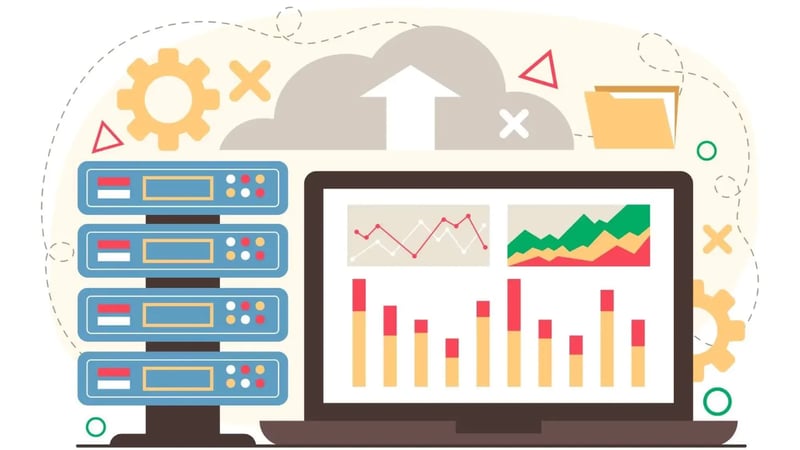The Future of Data Privacy: Balance Personalization with User Consent
In the digital era, data privacy has emerged as a major concern. In the pre-internet days, such worries were scarce, as it was challenging to gather vast amounts of information from numerous individuals simultaneously.
However, the advent of the Internet ushered in an era of extensive data collection. People allowed websites to store cookies on their devices and relinquished their data rights to online platforms. This enabled companies to amass a wealth of data for personalized marketing purposes. Yet, this practice also infringed upon privacy, as many consumers were unaware of their information being harvested and utilized.
In today's landscape, regulations like the CCPA (United States) and GDPR (Europe) have been introduced to address these issues. Let's delve into why privacy is crucial and why businesses must uphold it.
Why is Privacy Important?
The harvesting of user data quickly became a problem when hackers found out ways to steal that data and cause all kinds of harm. Financial damage aside, the social damage due to identity theft and other such crimes was extremely high.
A good example of this is Yahoo. This company was the victim of two data breaches: one in 2013 and another in 2014. The attacks resulted in the loss of complete account details for all 3 billion users of Yahoo. And Yahoo is not alone in this because many other companies have had huge scandals over the years.
Sony is another example notorious for being hacked. Here is an article from LinkedIn that catalogs all instances of Sony data breaches. According to the article, Sony had six data breaches from 2011 to 2023 in which employee and customer data, including sensitive information such as passwords and credit card details, was stolen.
These are all security issues, but they highlight a fundamental problem: data and information are valuable, and bad actors will try to access them.
This is where the issue of privacy is raised. If companies did not harvest so much data, would they be targeted for such attacks? Would so many people who knowingly or unknowingly entrusted their data to the company be harmed?
This is why there is so much emphasis on privacy and the protection of user data. Now, let's see how companies can move forward while upholding privacy standards.
How Can Companies Balance Personalization and Privacy
The following are some things that all companies should and need to do in order to balance personalization and privacy.
1. Be Transparent about Your Data Collection Policy
Transparency is required to gain the trust of your consumers and build brand credibility. You should be very clear about the kind of data you will collect and what you will use it for. The process of informing should be straightforward and easy.
Since it is a legal requirement to disclose this information, companies use dark patterns to make the information harder to see. Their incentive is to keep their consumer unaware of the data because an unaware customer is unable to raise a complaint.
A common example of this is hiding the details about what information cookies will collect. To actually see the information, you have to move through a series of pages before reaching the actual details.
Doing this generates distrust and is a great way to ensure technologically literate people will not visit your site or use your services.
By being transparent and hiding nothing, you can be sure that the people who do remain trust your company. It is recommended that you be particularly transparent about collecting personally identifying information such as IP addresses, IP location/geolocation, and username/email.
2. Obtain Explicit Consent to Collect and Use Data
Due to the GDPR, it is illegal to obtain and use data from consumers without their explicit consent in Europe. The United States is more of a mixed bag. It has several really specific laws that have limited scope. The CCPA, for example, is just a state law. It is only applied in the state of California.
There are also a bunch of other laws, like FERPA, GLBA, FCRA, HIPAA, etc., in the US. Some of these laws restrict specific types of data from being shared with specific entities, e.g., health reports, and credit reports. Others mandate that users be provided the option to opt out of data collection.
So, as a company, you need to be aware of the laws in your region and comply with them. As a general rule, you should always provide the option to opt-out and make it easy and straightforward. Your customers should not have to jump through hoops to even find the opt-out page.
If you do that, more people will appreciate you, and you won't find yourself on the wrong side of the law in the future. Because, like it or not, privacy has become a huge concern, and sooner or later, the entire world will have to follow consumer data protection practices.
3. Put Privacy First in All Your Marketing Strategies
Incorporate privacy-first thinking in your marketing strategy to stay ahead of the privacy wave. Many states in the US are working on passing laws for consumer data protection.
In the EU, the regulations are already in effect. So, you should think of ways to incorporate user privacy into your business practices. One of the most important things to do here is for the user to "opt-in" consent rather than "opt-out."
Today, companies will use their products and services to collect consumer data by default. The consumer unknowingly allows companies to do so by agreeing to the end-user license agreement. All consumers have to jump through a bunch of hoops to opt out of data collection and use.
This needs to stop, and you can start doing it today. Data collection should be off by default. Consumers should have the choice to opt into data collection so that they can get personalized results.
This basic privacy-first approach can help you comply with the law regarding consumer privacy. Just be very clear to all your customers that if they want personalization, they need to opt-in to data collection and processing.
4. Employ Data Minimization and Deletion
Another method of balancing personalization and privacy is data minimization. This is the practice of collecting only the most necessary data and foregoing everything else.
Nowadays, greedy companies will collect all kinds of data, including the ones they don't need. This is bad as it puts the consumer's privacy at risk. If the company gets data breached, all that extra information would just become an even bigger risk. To prevent that, companies need to use data minimization.
Another technique to use in tandem with this is data deletion. Data deletion is the expulsion of all data that is no longer required. For whatever reason, companies are reluctant to delete data. They would rather hold on to it forever instead of deleting it.
This is another risk to consumer privacy because hackers like to steal this lucrative information. To protect consumer privacy, all data that is no longer useful should be purged.
5. Using Privacy-Enhancing Tools and Technology
Since data is harvested through technology, its privacy can also be ensured through technology. Companies can take multiple approaches to enhance their customers' privacy.
A simple method is to introduce noise in the data set. Data becomes difficult to use with noise. It also makes it very hard to personally identify someone from their data. If you do not understand what noise means, then just know that it is useless data that pollutes the data set and makes it hard to discern anything meaningful from it.
It is easy to filter out the noise for someone who introduced it, but any other person will have a tough time figuring out what the data even means.
Another technology that companies can use to enhance user privacy is federated machine learning. Companies collect data, process it with machine learning, and create audience personas. These personas help with marketing segmentation and bring in the coveted profits.
In federated learning, models can analyze data in separate locations without sharing them. This means that data does not need to be stored on a central server. Instead, any user data can stay on the user's device, and federated learning can access it for model creation and processing.
Of course, this approach requires that the model's permission and access level to the device be highly selective and controlled; otherwise, it will open a new can of worms.
This improves privacy because the user is in control of their data and can choose what gets processed and what gets ignored. Such practices should become more mainstream.
Conclusion
Privacy of consumer data is paramount. It should not be ignored by anyone. Thankfully, the masses are warming up to the notion of protecting their privacy. Companies need to employ the methods we have listed above (and more) to strike a balance between consumer privacy and personalization.
So, there you have it—the future of data privacy is a bright one. Laws are being passed to safeguard and uphold consumer rights regarding their data. The sooner companies get in line, the better off they will be in the future.
This content is also available in:
- German: Die Zukunft des Datenschutzes: Personalisierung und Nutzerzustimmung
- Spanish: Protección de datos: equilibrio entre personalización y consentimiento
- French: Confidentialité: Équilibrer la personnalisation et le consentement
- Italian: Il futuro della data privacy: bilanciare personalizzazione e consenso
- Romanian: Confidențialitatea Datelor: Personalizare și Consimțământ
- Chinese: 数据隐私的未来:平衡个性化与用户同意

Opinions expressed in this article are those of the guest author. Aspiration Marketing neither confirms nor disputes any of the conclusions presented.









Leave a Comment